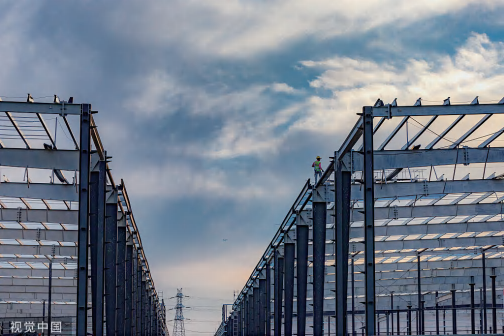Architectural aluminum panels play a crucial role in modern building design, combining structural performance with aesthetic flexibility. However, their long-term success in exterior environments depends largely on the surface coating technology applied during production. Among these, Steel Coil Coating processes—also used for aluminum—have evolved to deliver weather-resistant polyester systems that protect panels from harsh climates and environmental aging. These coatings also serve as effective Corrosion Resistant Coating solutions, extending the lifecycle of building materials in demanding applications.

Polyester-based Steel Coil Coating systems are widely used in construction due to their balance of cost, durability, and decorative appeal. New generations of polyester coatings now offer improved resistance to UV radiation, temperature changes, and moisture. These properties make them suitable for applications such as curtain walls, exterior cladding, roofing systems, and structural facades where long-term performance is essential.
One of the major advances in this field is the development of super weathering polyester (SDPE), which demonstrates 15 to 20 years of weather resistance under real-world conditions. These coatings can be pre-applied to aluminum panels through a Steel Coil Coating process to ensure uniform film thickness and eliminate inconsistencies caused by manual application. Importantly, SDPE systems also maintain reliable flexibility—capable of withstanding 90-degree bends without cracking—making them ideal for shaped or contoured panel designs.
A key function of weather-resistant polyester systems is their role as a Corrosion Resistant Coating. In outdoor environments, aluminum panels are frequently exposed to rain, UV rays, air pollutants, and fluctuating temperatures. Without proper protection, oxidation and surface degradation can occur over time. Coatings applied through Steel Coil Coating processes create a barrier that limits the intrusion of oxygen and moisture, preserving the substrate’s integrity and visual appeal.
Color retention is another important factor in architectural applications. Building owners and architects often expect metal panels to maintain their original finish for many years. High-quality polyester Corrosion Resistant Coating systems are now engineered with enhanced pigment stability and UV-blocking agents.
In addition to weather resistance, functional enhancements are being integrated into polyester-based Steel Coil Coating solutions. For example, anti-graffiti, anti-static, and self-cleaning coatings are now available for architectural panels. These finishes reduce the frequency of maintenance, lower cleaning costs, and keep building exteriors looking fresh and professional.
Another benefit of using Corrosion Resistant Coating through coil coating methods is its contribution to sustainable construction. Pre-coated aluminum panels reduce the need for on-site paint application, less emissions and labor costs.
The coating’s adhesion and flexibility are also critical during fabrication. Many architectural panels are customized through punching, cutting, or bending processes. Polyester Steel Coil Coating systems must be able to maintain their protective and decorative functions after these modifications. Recent innovations have led to coating formulas that can endure forming operations without cracking or delamination, even when applied to thicker 3.0mm aluminum plates.
Durability is tested through accelerated aging methods, including salt spray exposure, UV resistance tests, and thermal cycling. These procedures simulate extended outdoor conditions and verify the coating’s performance across various climates. For building projects in coastal, desert, or high-pollution environments, such rigorous testing is essential to determine the lots of suitable Corrosion Resistant Coating system.
Through innovations in Steel Coil Coating technology, modern weather-resistant coatings offer architects and builders a reliable way to protect and enhance aluminum panels. These coatings contribute to the overall resilience and visual identity of buildings, fulfilling both functional and aesthetic requirements in one integrated solution.


 English
English русский
русский Español
Español Português
Português عربى
عربى
